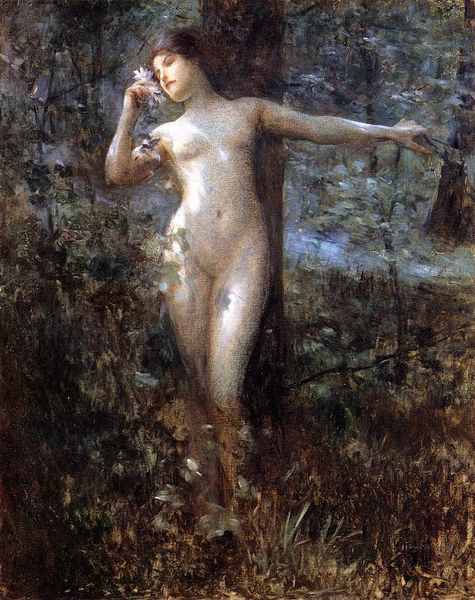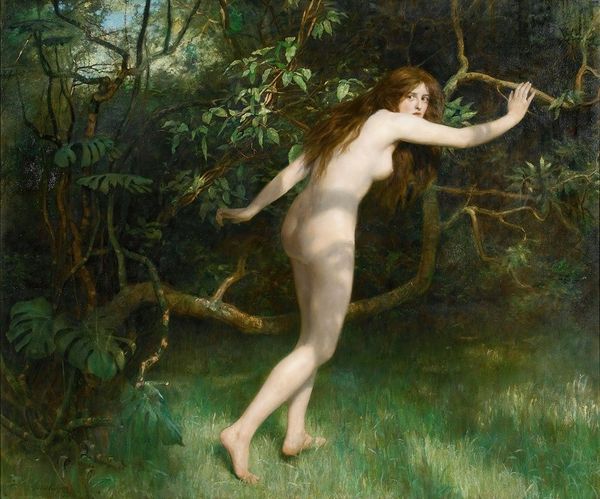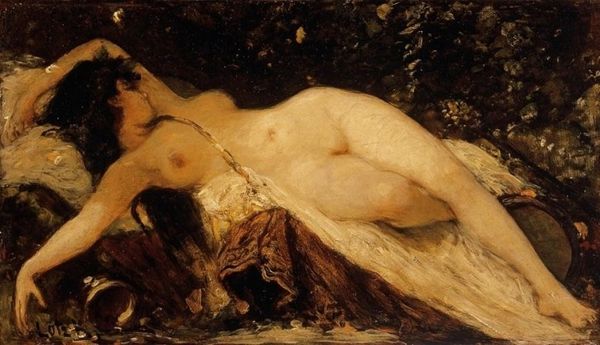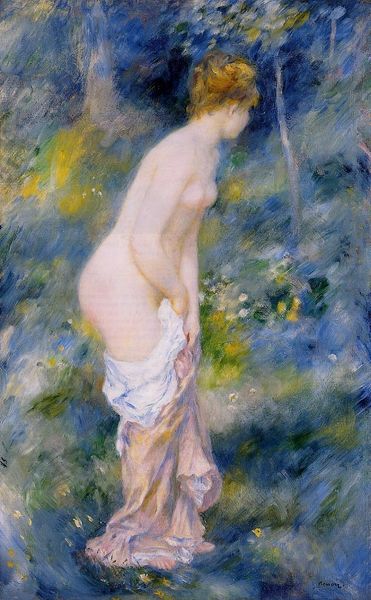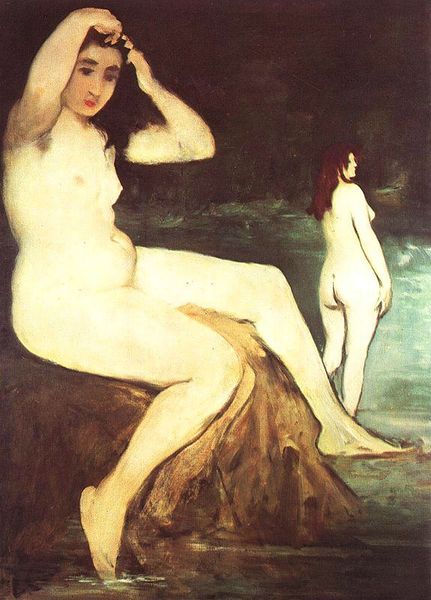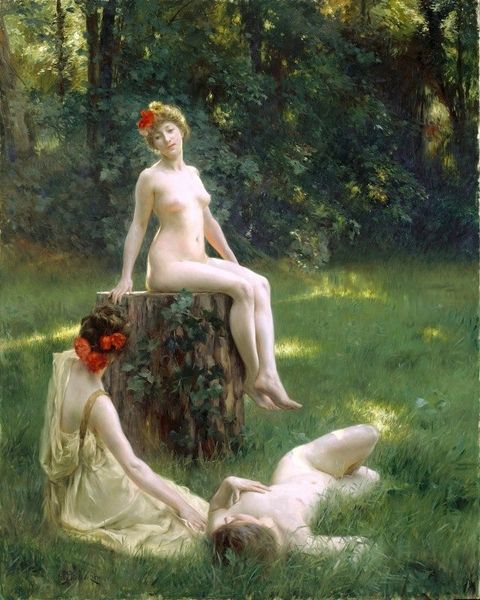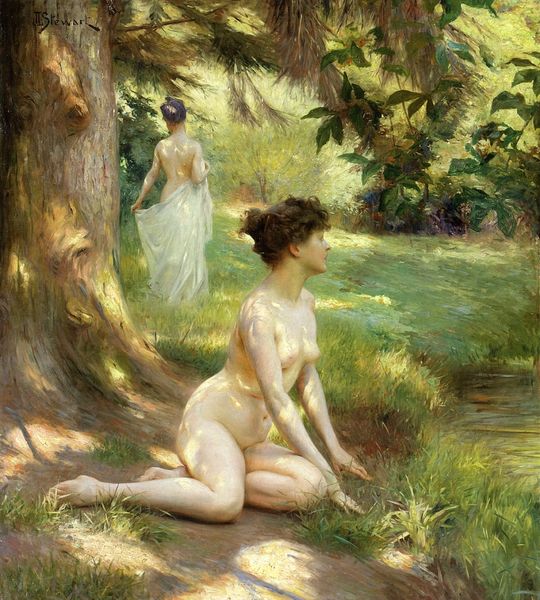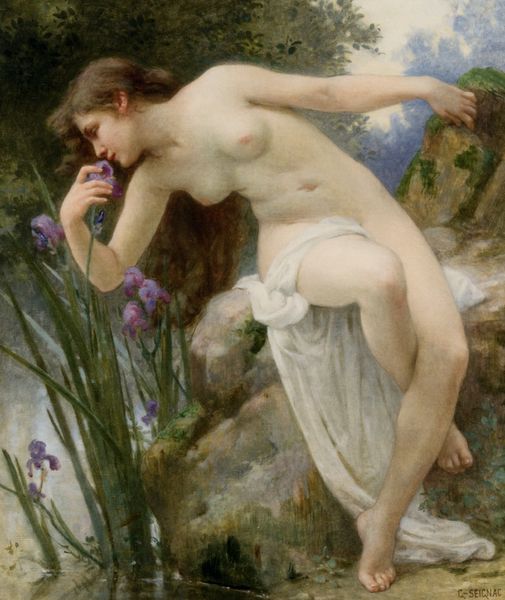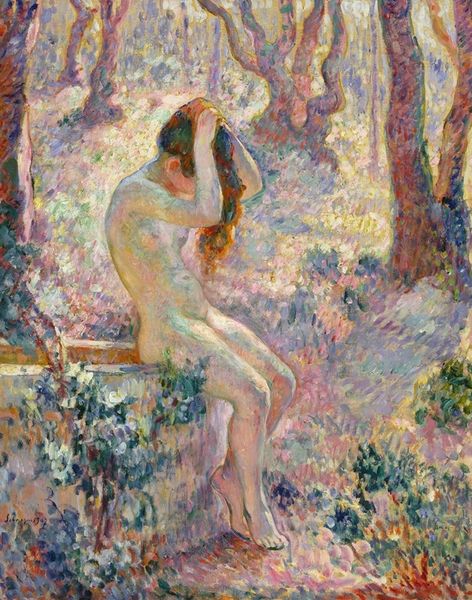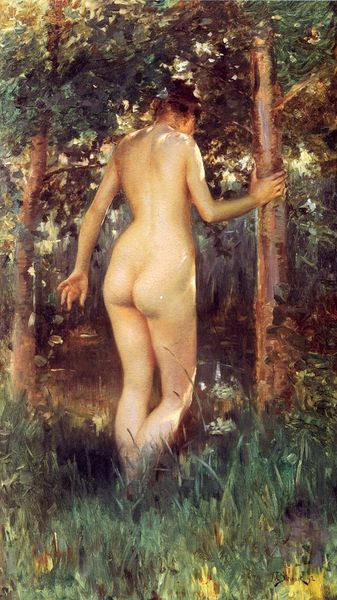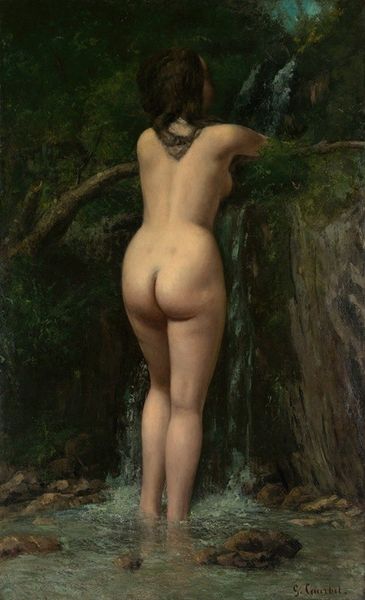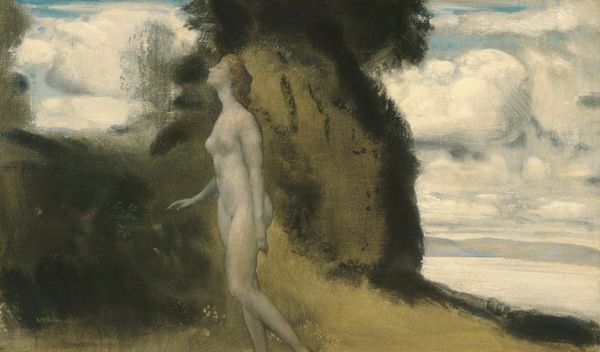
#
abstract painting
#
fantasy art
#
possibly oil pastel
#
oil painting
#
female-nude
#
fluid art
#
neo expressionist
#
acrylic on canvas
#
underpainting
#
painting painterly
#
watercolor
Dimensions: 208 x 160 cm
Copyright: Public domain
Curator: Before us is "At the source (the nymph in the woods)" by Giovanni (Nino) Costa, housed here at the Galleria Nazionale d'Arte Moderna e Contemporanea. Editor: The overwhelming first impression is one of subdued stillness. The cool tones, almost monochromatic in places, imbue the scene with a sense of solemnity. It feels like we've stumbled upon a private ritual, or a sacred grove. Curator: Costa's artistic approach often explored the representation of the female form within allegorical landscapes, very typical of its era. I'd encourage you to think about the patriarchal lens through which women and nature were, and often still are, interpreted. The nude figure of the nymph within the woods becomes symbolic—but of what and for whom? Is this the artist's personal symbolism or are there cultural dynamics to explore? Editor: Symbolically, water nymphs are creatures that act as bridges between worlds, and the urn she's next to emphasizes that connection with both earth and spirit. The positioning of the figure in contrast with the dark cave suggests the feminine presence can animate the unseen or unexplored, something liminal about bringing what's inside out in a moment of exposure. Curator: The choice to depict the nymph unclothed demands a deeper questioning, certainly now. Was it a move towards celebrating feminine beauty and nature, or does it partake in the long art-historical trend of the objectification of the female body? Think, too, about the politics of displaying nude figures within museum settings, especially given art institutions' colonial and patriarchal histories. Editor: True. I am caught by the light itself—how the figure is bathed in it. The source isn't just water; it is that feminine form. Even the muted colors serve to heighten that sense of something emerging. It might even tap into the enduring archetype of the sacred feminine—but yes, that archetype has often been co-opted. Curator: These paintings offer an insight into the social mores and prevailing assumptions of the artist's era, and provide critical points of reflection in terms of how gender, nature and power continue to be viewed. Editor: Yes, ultimately, art like this throws into sharp relief those lasting associations we hold, so perhaps our viewing becomes a source, too—a source of new critical insights.
Comments
No comments
Be the first to comment and join the conversation on the ultimate creative platform.
